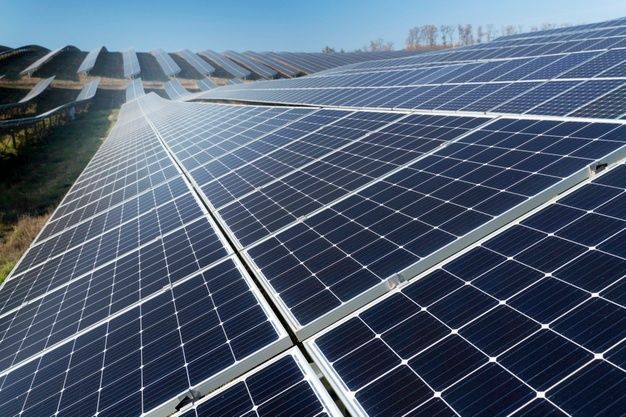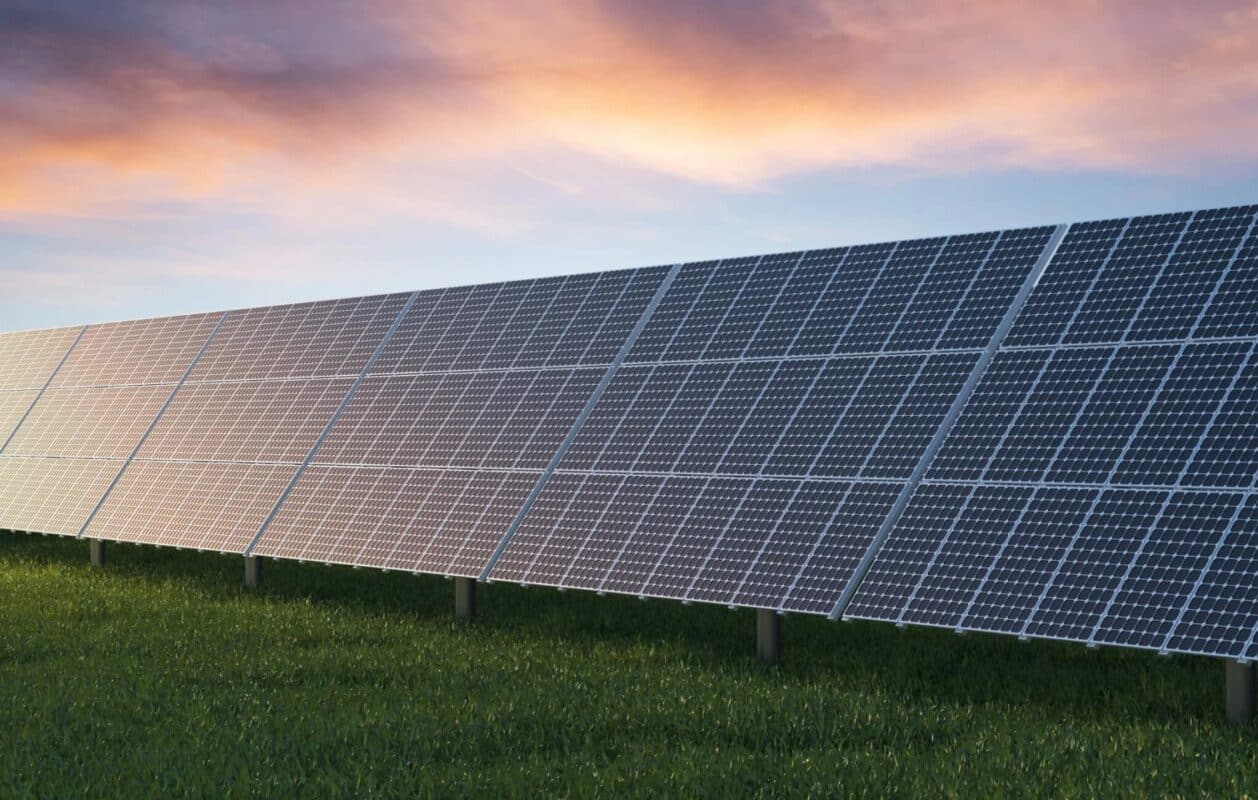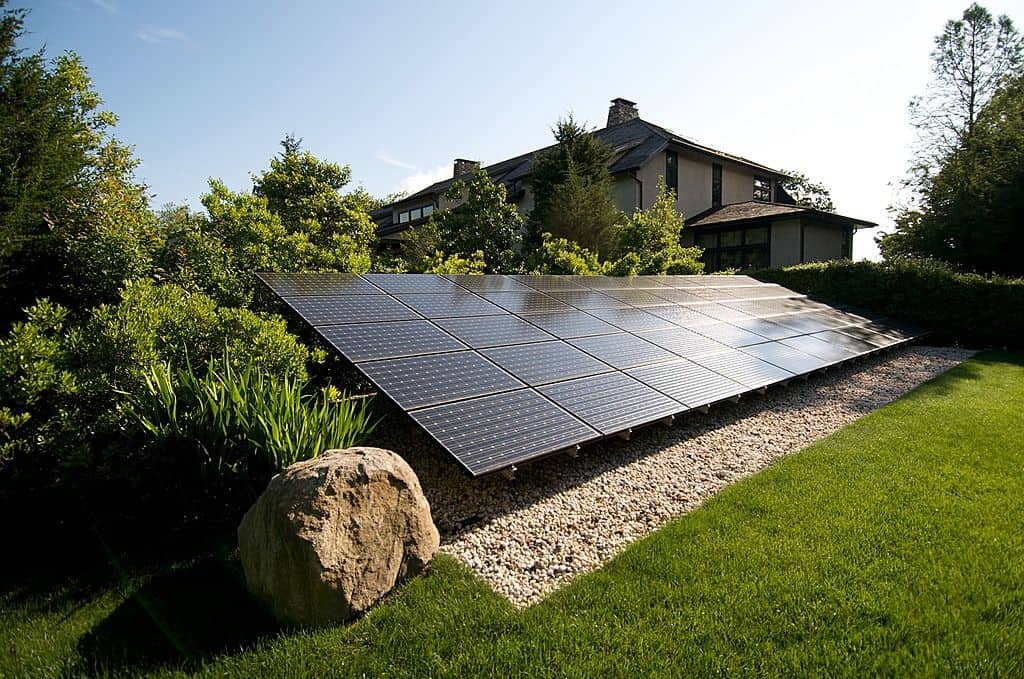Utilizing High-Efficiency Solar Panels
Efficient solar panel are instrumental in achieving maximum energy output per unit area, allowing to footprint of the affordable at scale carbon-free commodity electricity production. The same rooftop space available to homeowners and businesses, customers can get more power by choosing solar panels with an efficiency higher than 22% compared to standard average efficiencies of 15-18%. These improvements to efficiency are a result of utilizing new materials (i.e. monocrystalline silicon) that have better light absorbence and conversion abilities
Materials and Technology
Efficiency also greatly depends on the materials used to make solar panels. These are monocrystalline silicon panels (they look black and even because they contain a single crystal) that, can have efficiency up to 24%. Instead of multi-crystal silicon, the panels are single crystal so more effecient elecron flow leading to less loss-energy. PERC (Passivated Emitter and Rear Cell) technology improve performance by adding a layer on the back of each cell to bounce light back into it before it exits.
Installation Techniques
Advanced placing of these solar panels becomes an essential part for greater efficiency. Solar gain can be greatly enhanced if it is oriented and installed at an optimal angle. In the northern hemisphere, panels should face south at an angle that is equal to your location's latitude for optimal sun exposure throughout the year. Using solar trackers that align the panels relative to the sun as in moves through day can improve energy generation up 25%.
Incorporation with Intelligent Systems
By combining solar panels with smart energy systems, we are able to consume the electricity in a much more efficient way. Energy production and electricity consumption patterns are analyzed, to recognize the optimal use of energy in real-time by means of using smart systems. It could - naturally drasticized by to the electricity consumption calculators of ExtremeTech - store broadly-excess energy generated during peak sunlight hours into stored in batteries or utilized instead toward high-consumption activities and draw down on need from grid electricity.
Cost vs. Benefit Analysis
Yes, high-efficiency solar panels have a higher initial cost than less efficient products; however the long term savings are well worth it. Some are more expensive to buy, in terms of initial outlay anyway but when viewed on a detailed cost/benefit analysis; the added costs will be repaid by falling electricity bills over the first few years thereafter. The longer life and durability typically involves higher guarantees on high-efficiency panels after a while you can expect value for money.
Optimal Inverter and Power Optimizer Use
Solar inverter - Another essential component of your solar power system, the inverter along with Power optimizers functions to increase energy efficiency overall. The right inverter choice and smart use of power optimizers can help increase energy yield from solar installations by up to 30%.
Choosing the Right Inverter
The inverter you select should be like the rooftop solar panel, optimizing energy conversion from DC (direct current) -generated bythe sun into AC - used for homes and businesses. Commonly used and less-cost-effective string inverters may be installed, but they can reduce efficiency of the system if solar panels are only partially shaded. Whereas microinverters, while more costly than string inverters, give each panel autonomy and generate power even if some house in the shade. A solar array with microinverters will produce up to 15% more energy than one paired with a traditional string inverter under the same conditions.
Implementing Power Optimizers
Each solar panel in a system gets its power optimizer so that these optimizers work with string inverters to perform the function of microinverters. They optimize the voltage and current from each panel to create maximum power output: essentially mitigating for problems such as shading or sole dirt collection on any individual panel. One study found that systems fitted with power optimizers could enhance energy yields by up to 25 % in partially shaded conditions.
Configuration and bootstrapping
It is crucial to properly install and set up inverters along with power optimizers for enhancing the efficiency. That includes the physical mounting position versus solar panels, but it also means knowing enough to ensure that those devices are specifically calibrated for each practical array you have. A clear example is aligning voltage and current settings of power optimizers with peak power points of the solar panels they are paired to, which in turn greatly increases system performance.
Real-time surveillance and follow-up
Tools that provide real-time monitoring and give you data on the performance of each panel can help in identifying areas with problems before your costs spiral. Such monitoring, followed by regular maintenance, ensure that the inverter and power optimizers run to their full potential as well. This approach will help keep the energy output high and prolong the life of your solar power system.
Adaptive Energy Management Systems
Efficiency in the production, storage and consumption of energy is on everyone's lips these days, more so on account of solar photovoltaic systems with adaptive Energy Management Systems (AEMS). An AEMS can provide significant enhancements of overall energy efficiency, typically saving 20% or more.
Real-Time Production and Demand analysis
AEMS are responsible for the dynamic management of electricity flow within a solar energy system using real-time data to ascertain the operations required. This involves tracking solar yield, household energy consumption and even the weather to forecast ever variations in compulsion. If the upcoming forecast, say shows predicted clouds not letting much of sunlight come in then such system can save energy powered through previous days or switch to low energy consumption mode.
Collaboration with Battery Storage System
The importance of the co-dependence between AEMS and battery storage technologies One of the most important functions was therefore an ability to cycle batteries of peak times in way that took into account daily cycles and solar production data. During sunlight hours especially at peak, any surplus energy can get stored for later use in high demand times or time of low production and therefore keeps the supply secured; lessening reliance on grid.
Automated Load Balancing
In this case, AEMS also automate a more general type of load balancing called demand side management (DSM or DSM CP ). This involves adjusting the power consumption by various appliances and systems in the home/business to even out (balance) energy available from renewable resources such as rooftop PV solar panels. It may involve postponing the operation of power-hungry appliances such as dishwashers or HVAC systems until better electricity production hours. This allows automated adjustments which can now prevent a lot of the waste associated with running expensive devices unnecessarily at peak times, therefore reducing utility bills.
Predictive Maintenance & Fault Detection
Predictive Maintenance AEMS Feature Data analytics can help these systems to foresee and intimate the owners that may occur a fault in Solar Panel or any other system attached with it which will surely burgeon into severe. The system is able to perform periodic self-diagnosis and inspection by identifying a predictable falling in power generation of specific panels (a malfunctioning device or accumulating dust will be discovered before its influence becomes substantial).
Energy-Efficient Design Modifications
Design tweaks to solar installations not only cater towards higher capture rates of suns' light, but also reduce energy wastage in assembling the individual components. Panel layout and structural solutions may increase energy efficiency by 10-15% in new builds.
Bifacial Solar Panels
Solar panels are more efficient when they can capture light from both the front and back, bifacial panels significantly boost energy production. Monofacial applications fix only one problem with the panels but truly bifiacials are benefiting from light reflected off of the environment and backside of the panel, able to deliver 30% more electricity than traditional monofacial solar tech. Something like white gravel or a higher mounted array to capture more reflected light from the rear can increase energy yield for these panels.
Aero All In One Mounts
Aerodynamic mounting solutions can reduce drag, and help maintain lower temperature ranges around the solar panels enabling better efficiency due to following airflow. Elevated racks with a certain degree of tilt and distance in between them helps improve airflow to reduce overheating and any potential loss of further efficiency. Researchers have found that regulating airflow to maintain maximum efficiency can help to reduce drops in performance caused by temperature rises.
Advanced Cooling Technologies
For any solar module cooling technologies are major ones to increase efficiency which include both active and passive, using thermally conductive materials. An active cooling system run either by water or air alike in order to cool down solar panels during direct sunlight is used. Simply by spraying the rear of the panels with water in a type of basic system cooling facility can lower front side temperature up to be 10°C, raising global performance.
Focusing the Light
Incorporating light-concentrating technology such as lenses or mirrors, increases amount of sunlight that hits the panels. This increase consists of a two-step process: Broad-spectral modification directs daylight on menagerie high-efficiency "multi-junction" solar cells, that replace sunning fit for will material usage and energy production. Systems based on these technologies are particularly useful where solar insolation is high, in deserts; with a very low biotic activity and little to no vegetation.maximum of 22% electrical conversion efficiency have been recorded from flexible CIGS PV modules.
Implementing Smart Metering and IoT
The advent of smart metering and Internet of Things (IoT) devices is helping to revolutionize the way solar systems are managed and optimized for energy efficiency. By incorporating smart technology for real-time data tracking and automated system management, systems will be 20% more energy efficient.
Deployment of Smart Meters
Smart Grids - Smart meters help view operational power consumption and can be easily controlled. They provide information about power output and usage, and residents can make informed decisions about when heater maintenance is needed. It might tell a household that during peak production times, it’s cheaper to run a dishwasher or a hot air tumble dryer, but not both at the same time, and help save costs (and could have a wider impact, reducing grid demand charges).
IoT Sensors Enable Better Performance Monitoring
IoT sensors can be interconnected from a solar installation system to carefully monitor the operation of its smallest components. They are able to sense and report real-time conditions such as solar irradiance, panel temperature, and overall system efficiency. IoT sensors can be used to monitor the cleanliness of solar panels, and when productivity drops due to dirt accumulation, an automatic cleaning system can be activated.
Automated Energy Management
IoT technology can automate the energy distribution of solar grids. IoT systems use smart meters and sensors to collect data and can recalibrate energy flows on their own - fine-tuning battery charging and discharging or distributing excess energy back to the grid. These systems help manage energy in the best possible way and optimize waste during peak production times.
Home and Business System Integration
By connecting smart meters, IoT devices to existing home or business automation systems and leveraging on-site power sources, we can unify a solution that integrates lighting control, heating, cooling electric poles, etc., depending on the availability of solar energy. When switching to solar power, the above integration can greatly reduce grid power consumption and increase energy savings while reducing the overall environmental footprint of the property.



